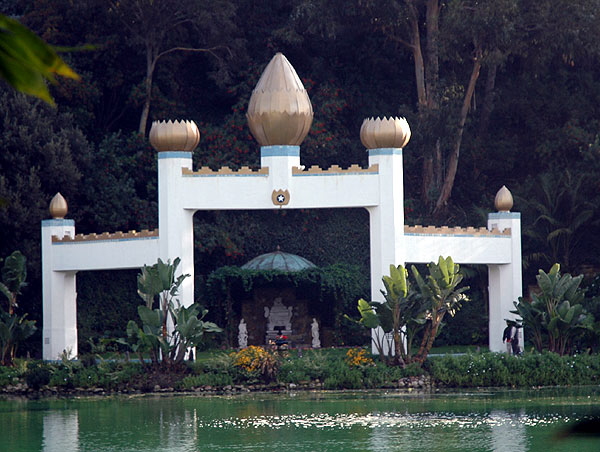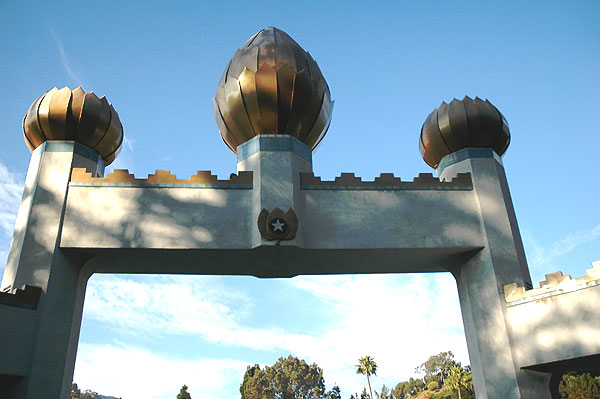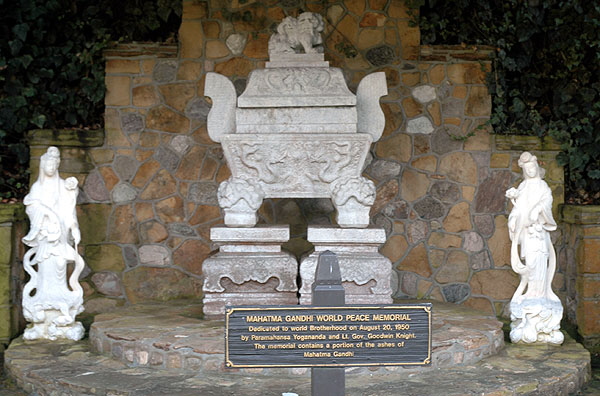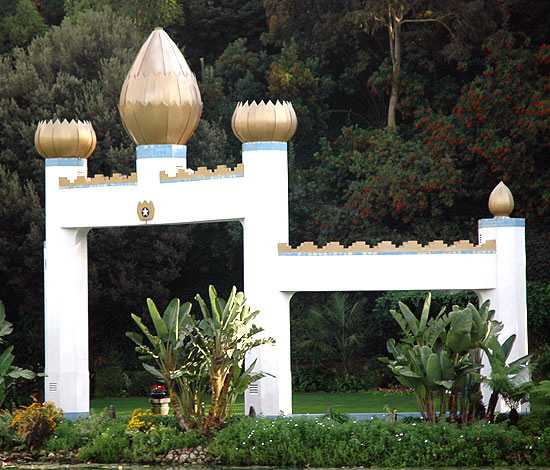|
In Time of War - Visiting Gandhi
Rather than something on politics and the war, a visit to the Mahatma Gandhi World Peace Memorial, and the "wall-less temple" erected in his honor. The memorial is a thousand-year-old stone sarcophagus from China, in which a portion of Gandhi's ashes are encased in a brass and silver coffer.
This is at the Self-Realization Fellowship Lake Shrine, 17190 Sunset Boulevard, Pacific Palisades, California, just up the hill from Pacific Coast Highway, at the edge of Malibu. It was established by Paramahansa Yogananda and opened on August 20, 1950 - a ten-acre site, with gardens and natural spring-fed lake, with swans, ducks, koi, and lotus flowers everywhere.
Gandhi's ashes had been sent to Yogananda by an old friend, Dr. V.M. Nawle, a publisher and journalist from Poona, India, who understood the bond between Yogananda and Gandhi. Following the dedication of the memorial, Dr. Nawle wrote - "Regarding Gandhi ashes, I may say that they are scattered and thrown in almost all the important rivers and seas, and nothing is given outside India except the remains which I have sent to you after a great ordeal .... You are the only one in the whole world who received Gandhi ashes outside India."
So here they are.
|




